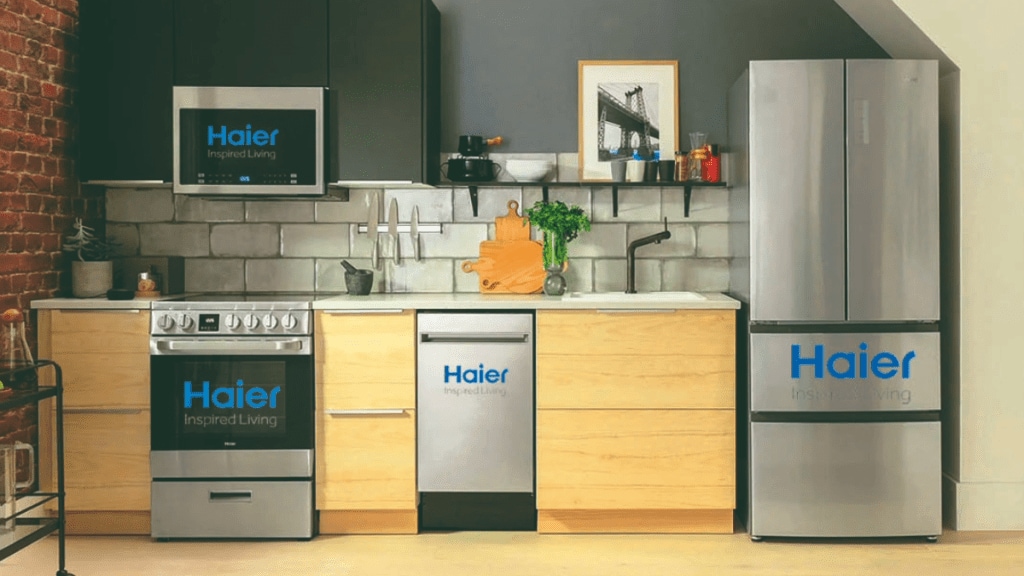In its bid to position itself as a serious premium brand in the consumer durables space, Chinese multinational company Haier has made a few marketing shifts with a largely digital-first approach. The emphasis is on enhancing consumer experiences, elevating engagement levels and the deployment of dynamic content strategies for Haier to reach its turnover target of Rs 10,000 crore by the end of 2024.
In CY22, Haier India clocked revenues of Rs 6,000 crore and as per its projections, it is expected to have closed CY23 at Rs 8,000 crore, registering a 33% growth, the company told PTI last year while discussing its investment plans.
Nearly 60% of Haier’s marketing spends have been on digital in the last couple of years, a notable shift from a few years ago when that number was a mere 20%, the company had said during a media interaction last year. Most of this spending has been on influencer marketing, content partnerships and OTT. Cricket has been a key vehicle for the brand too — though it didn’t share investment figures — with the IPL and the World Cup in 2023 being the key properties. Given that the World Cup coincided with the festive season in 2023, Haier recorded an estimated 42-45% growth in volumes over the 2022 festive months.
The plan for 2024 is to continue with a digital-first approach. There will also be a robust focus on influencer partnerships and user-generated content. It will also largely focus on consumers in metros and tier-I markets, where most of the premium audience is based.
In FY23, the Indian consumer durables sector reached Rs 1.15 trillion in revenue as per a Statista report. Of this, large appliances such as refrigerators, ACs and washing machines account for around Rs 80,000 crore. Haier, which typically performs well in the AC and refrigerator segments, faces stiff competition from players such as LG, Samsung, Whirlpool and Voltas.
Experts note that entry-point consumers are not returning to make repeat purchases, whereas mid and high-level consumers are willing to spend more to improve their quality of life and are even opting for EMI schemes to make these purchases. The focus on high-affinity customers is therefore logical.
According to Soumya Chatterjee, TCG market expert, India at GfK, the shift in consumer preferences emphasises the demand for advanced features, cutting-edge technology and focus on experience and home comfort. “Amidst a state of global macroeconomic uncertainty and geopolitical challenges, brand names remain a crucial decision criterion for consumers. Therefore, it is advisable for brands to uphold a premium status,” remarks Chatterjee.
Haier, which made its entry into the Indian market around 20 years ago, has steadily gained recognition among Indian consumers for its innovation and product quality. Lloyd Mathias, business strategist and independent director points out that while the brand has performed well in refrigerators and ACs as well as niche segments such as wine coolers, it has largely competed on price. Haier offers products that are good quality and comparable with Korean brands such as LG and Samsung, but at a lower price but it needs to do a lot more in terms of brand building, say experts.
Nisha Sampath, managing partner, Bright Angles Consulting, notes that to build a premium image and take on other players in the market, a presence in institutional segments might be useful. “This presence reassures consumers about the brand’s scale of operations and expertise. By doing this, even OnePlus was able to stand out amidst a sea of Chinese brands that look and feel similar,” explains Sampath.
Prior to the pandemic, the brand invested heavily in traditional media such as TV and print since a good volume of its sales was also offline. With e-commerce emerging as an important channel even for white goods, most of Haier’s Rs 100 crore marketing budget has been devoted to digital channels. A pivotal aspect of the brand’s strategy was the use of Connected TV (CTV) and mobile advertising, timed during prominent events such as the Indian Premier League and the ICC World Cup. To align with the evolving trend of ‘premiumisation,’ its communication is aimed at the so-called “discerning” household. During the World Cup, the brand rolled out a targeted mobile campaign aimed at handsets priced over Rs 25,000 to reach the more premium audience.


